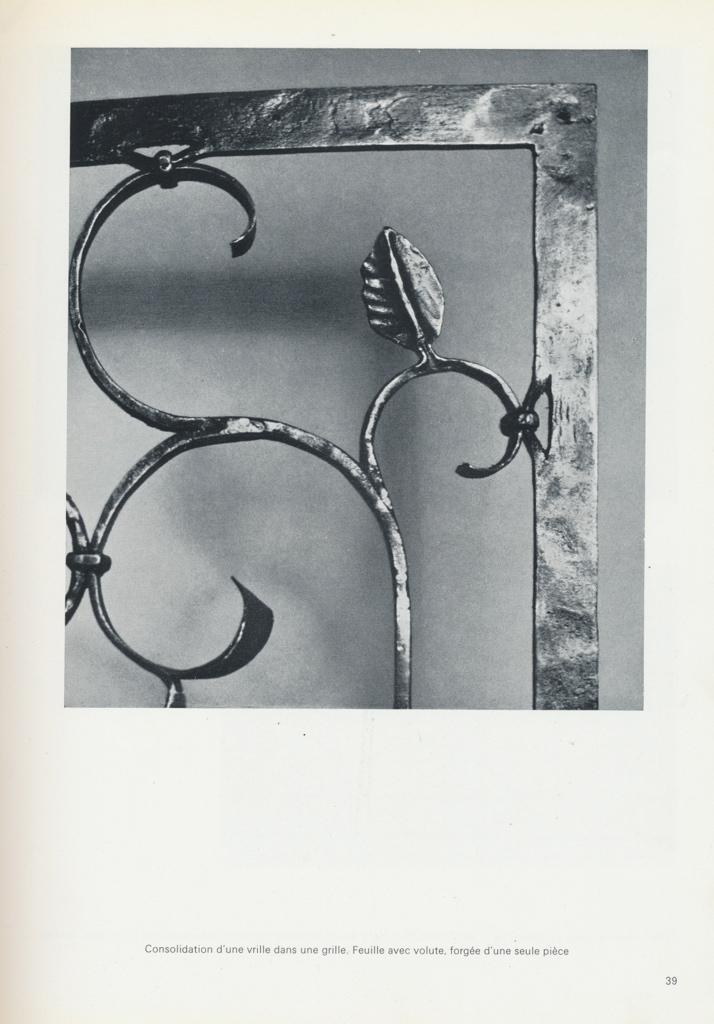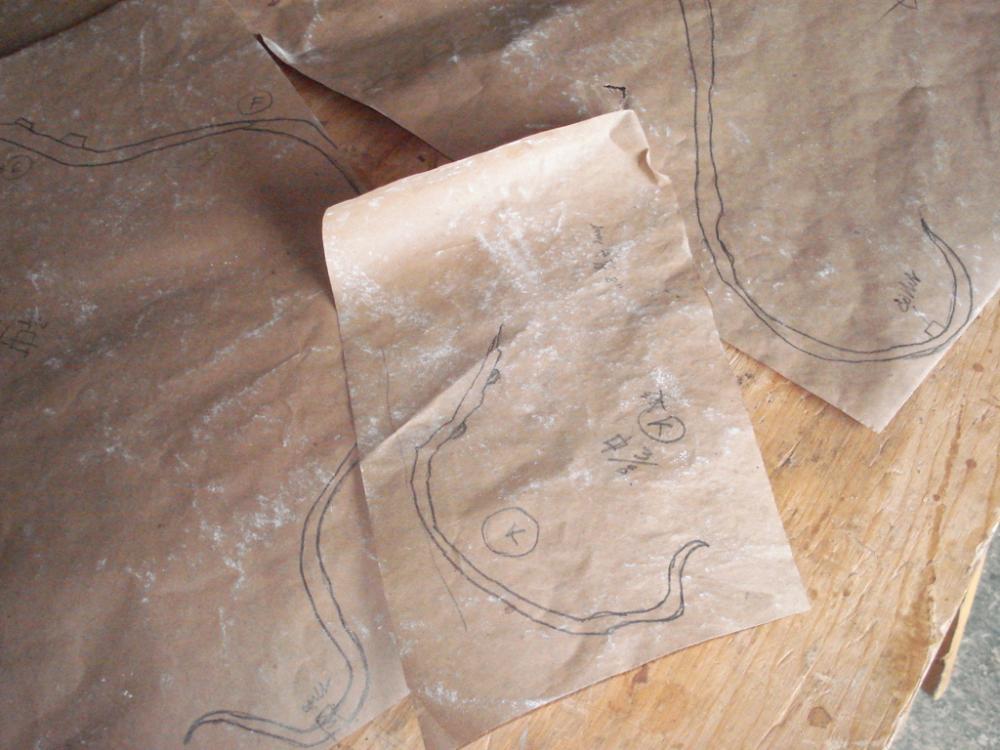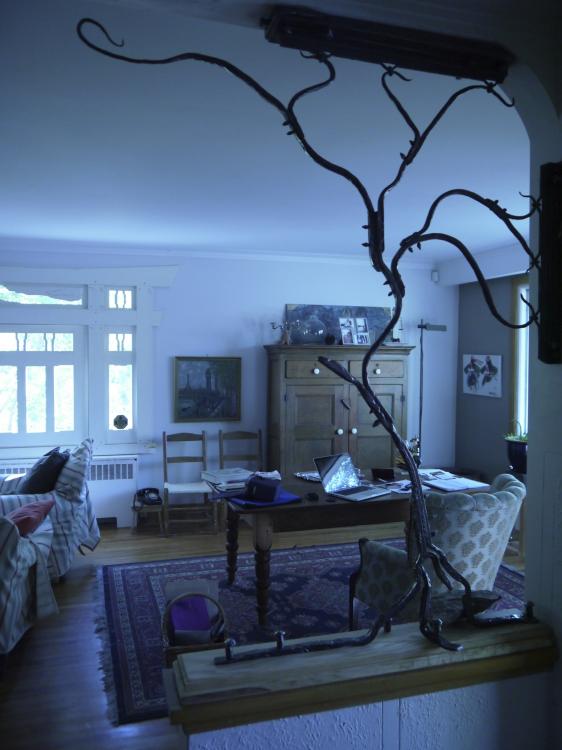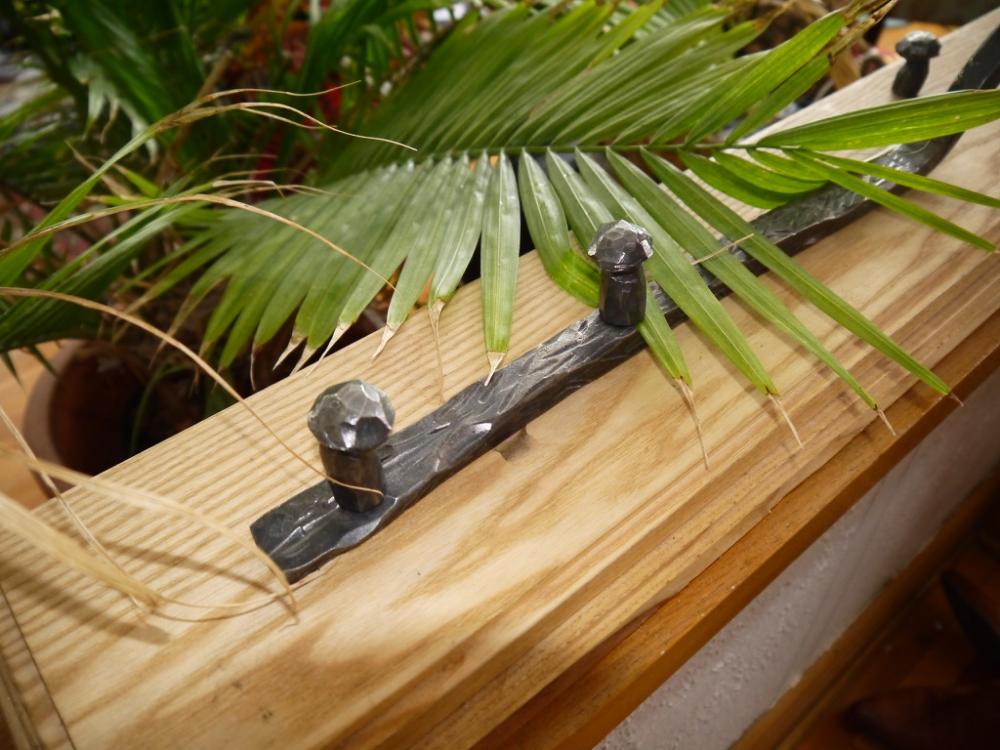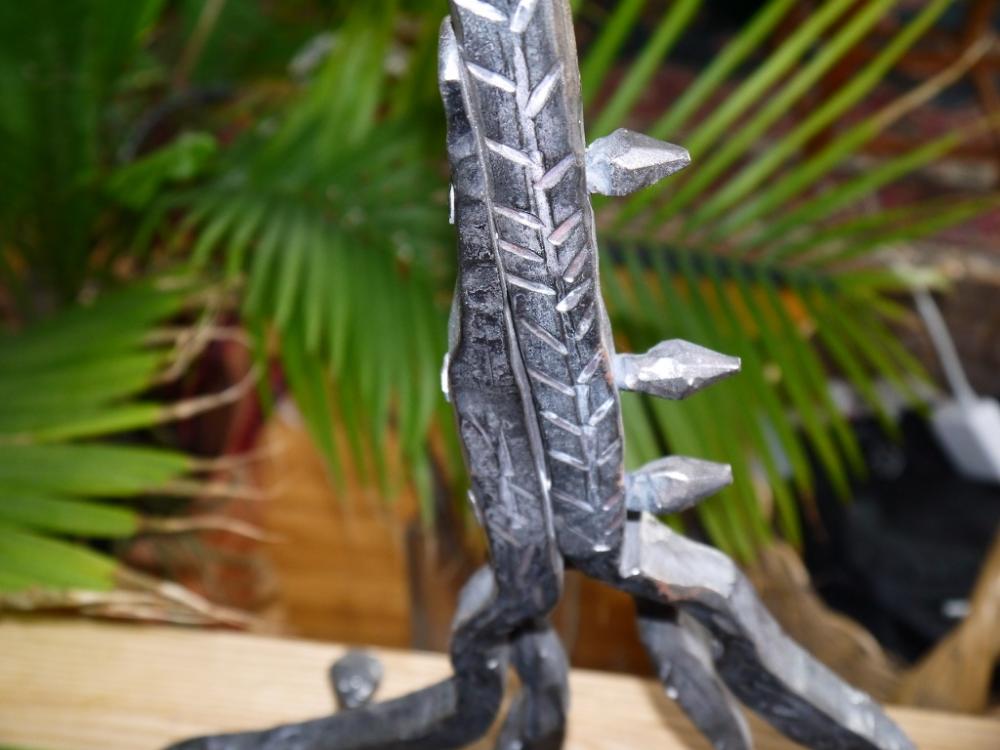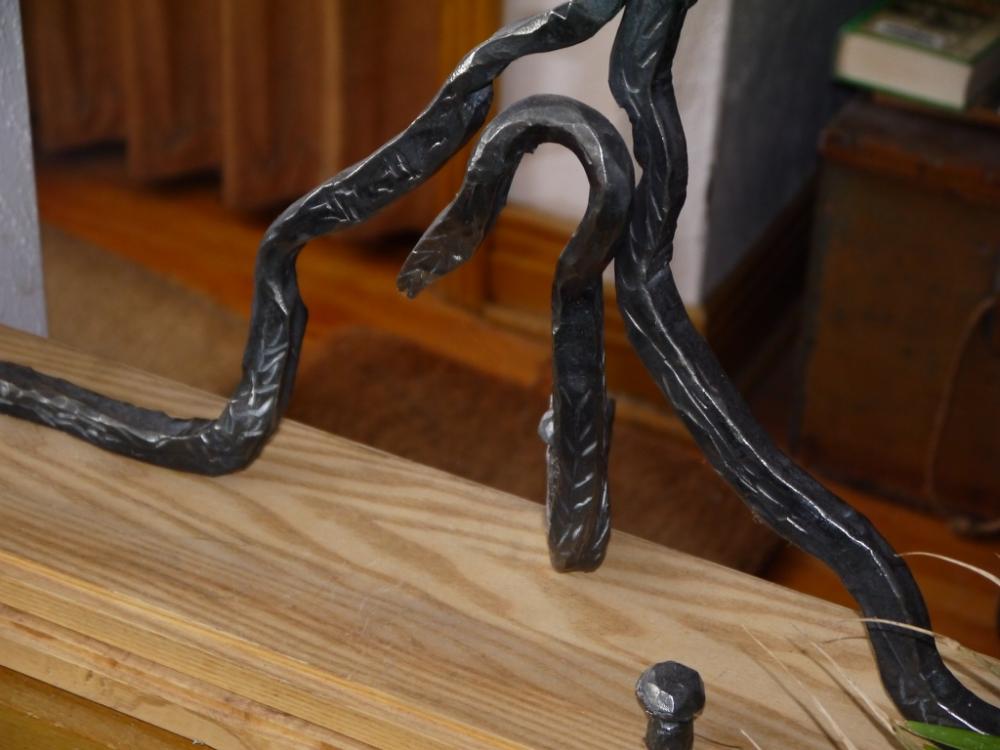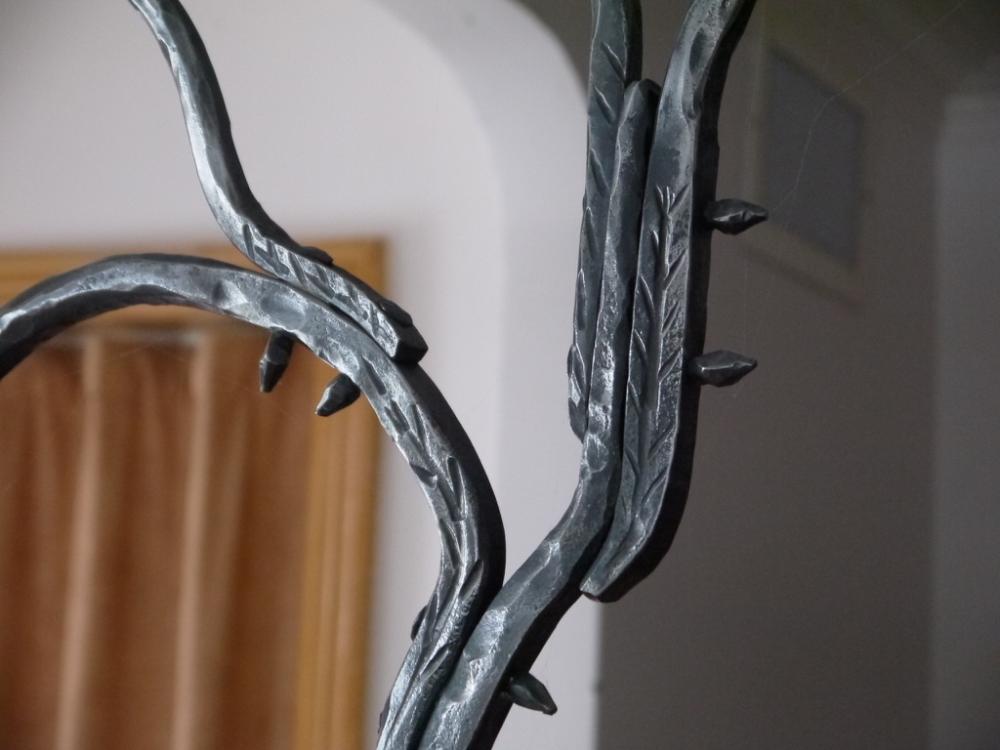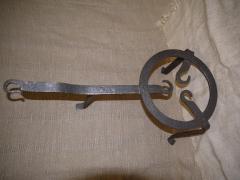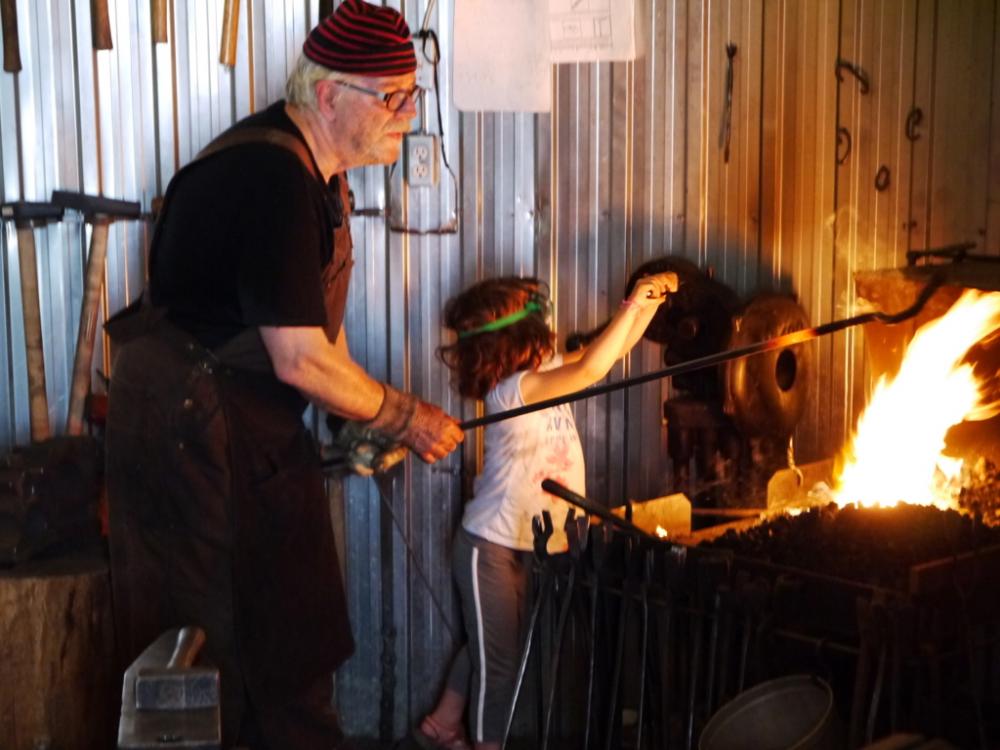-
Posts
564 -
Joined
-
Last visited
Content Type
Profiles
Forums
Articles
Gallery
Downloads
Events
Everything posted by yves
-
Charles, I would like to insist on the fact that IFI constitutes the equivalent of an encyclopedia on blacksmithing. And yes, as you aptly said, our grand chldren one day will need the knowledge and knowhow accumulated here. When, a while back, IFI was threatened in its existence, I was shocked by the possibility that this knowledge would not be made available for those coming after us. I posted something recently precisely with the objective of helping someone who wants to go further than his/her comfort zone. I showed how it works for me. And others have shown how it works for them. IFI is an accumulation of knowledge permitting one to choose between the many ways there are to skin the blacksmith's cat. By the way Charles, I do not believe that you are as bad as the others ...
-
When I started, I read everything here. After that, I started hitting hot and hotter metal as time went by. Then forging made some forging problems for me. I always found out answers to my questions searching and reading IFI posts. How do you avoid the wrath of the Powers, the The Luckys, the Sells, the Glenns, the Stevens of this world? Read what they and so many others (with more mellow personnalities) have given freely and generously to this site, building an elaborate encyclopedia of blacksmithing. Then as you advance, you might have what I would like to call "educated questions". Ask them, showing how they are of the educated type, by saying what you have done to solve the problem, what problem you still have and the bears will emerge from their caverns and be all help and most of the time with fine humour. I must say that from the height of my ignorance, I almost joined them recently when some lazy ... just wanted everyone to do the job for him. But before I could write anything, the Powers, the The Luckys, the Sells, the Stevens, the Glenns all came down on him ... the poor soul.
-
Frosty, Thanks for the compliments. I do hope that what I posted here will help someone who, as I said, has the opportunity to get out of his comfort zone. Doing it this way, designing, slowly developing the details, sticking to the plan as much as possible, is the easiest way of doing it. I believe it was monsieur Turley who said that the beating-hot-steel-on-an anvil part of the blacksmith's job is something like 30%. Doing all this is part of the 70% of the blacksmith's job, and a good part of it. It takes time to design a proposition for a client. It takes time again to get to the details and plan them. And more time again for the final drawings. But to me it is an importtant part of the job since I do not do the same thing twice. To me, and to you Frosty, it seems to be the best way.
- 5 replies
-
- separation
- grille
-
(and 3 more)
Tagged with:
-
- 5 replies
-
- separation
- grille
-
(and 3 more)
Tagged with:
-
In 2012, I was commissioned to forge a separation grille between the entrance of a home and the parlor immediately adjacent. I was never happy with the photographs but not wanting to hire a professionnal photographer, I finaly decided to be content with the pics I took then and present the grille here. All this was done with hammer and anvil. The only modern tool I used was a small toch to finish installing rivets and collars when I was not fast enough and lost the forge's heat. The reason I present it (apart from showing off) is to help a beginner in stepping out of his comfort zone. This was a big step for me, my first big one out of the hook-zone. The way I went about it made the difficulty a pleasing adventure. I now use this approach on every important commission. It works for me. I begin with small drawings in my note books. Note that all drawings are to scale : the ceiling, the wall and the base have to be taken into account even at the very beginning. It does make things easier. The grille grew from the small drawing on the bottom of the right page. Note that I also drew/exploited Fritz Khün's forgings on the left page. Ultimately, I used his technique. The chosen drawing was doubled once (left page) and twice (right page). The obsession with Khün's forging is apparent. It appeared to be at the moment the most elegant manner to attach the grille to the wall. And then a larger drawing always to scale where the parts were numbered and the size of the steel to be used was decided. The final working drawing, scale 1:1, on the smithy's wall : The parts of the grille were transfered on Kraft paper : And finaly on a steel table in order to forge the parts precisely in the shape of the drawings and to adjust and fit them together. Precision was important as this grill is attached to a wall, a base and a ceiling. Here are views of both sides of the grille installed. The mushrooms that grow on the foot of the tree were tapped and screwd on hanger bolts. I copied Khün's technique outright and I am very happy with the results. there are no welds. The whole thing hang to the wall and ceiling with the collars. Hanger bolts to anchor in the wall. The same bolts were used to attach the upper part to the ceiling. And finaly, a few details of the treatment I gave to the branches.
- 5 replies
-
- separation
- grille
-
(and 3 more)
Tagged with:
-
FROSTY, I also use the same type of business end in my forge. I find it very effective.
-
The one I use in the wood stove.
-
I started forging precisely to make things for us. Then I got a first small commission, and then another. But I still forge for ourselves. What I forge looks and especialy feels better than what we are offered at the Home Depots of the world.
-
-
- hotermans collection
- new-france
-
(and 3 more)
Tagged with:
-
Drawer handles, sure. For doors I do not think so. I forged some a few years back and the two screws give with side pull. I have to forge another design as I broke a screw the other day.
-
Having read here when I started, that a squirrel cage makes a good blower, as you can see in the second pic of my post up here, I changed the Champion 400 in a cage and my grand daughter into the needed squirrel ...
-
-
I am very eager to read the answer to this question of how inspiration comes about. Are these sculptures sudden visions? Are they the product of cold (cool) reasoning after some suggestion, for instance, or rather a sort of spontaneous, immediate, and global apprehention of a reality? And by the way, your work never ceases to amaze me.
-
Thomas, The worst is that I knew that lidded steel cans would be perfect but procrastination on the one hand and having learned to be cheap from you on the other hand, I postponed the buying of such a can. I'll store them outside of the forge. I dont know what started the fire, I did not cut hot metal with a chisel, I did not go near that spot with hot metal. Could it have been scale when forging? I do not see anything else.
-
That bag of rags that you do not go to more than once a month will catch fire at one point. I was wondering what that smoke invasion was. It could not come from the forge. The flames that started coming up from the «rag area» answered my question. All I'll have to deal with when I get back to the forge is an awfull smell. Luckily. I do not know how the fire started. I dont care. I will not keep rags in the forge any more.
-
A guy I never met before stops me in the entrance of the food store and says (in french) : «Are you as F*** tired of this as I am?» I said I was and we both knew we were talking about the -20Cº and -30Cº we have been having for the past weeks ... and I do not want to remember how many F*** weeks! (To the admins : I must be allowed the F*** since I am french ... and I do not know what I am saying ... ) I cant forge because my blower is to darn heavy! I put a household electric iron on it and on the anvil in the morning. But if I move away for a while, the non freezing oil in my blower (Champion 400) does not freeze but it does get very, very heavy! And if I work hard and get hot, when I go the bench vise to do cold work, the door is right there and I freeze my back even if I heat my wood stove. Cant win! Fed up! F's ...
-
I would give a penny to have had the idea of the clock!
-
Having read all the above posts, I must admit that saying what I wanted to say or what I am tryjng to say about your work would only repeat wjhat others have said. It was about admiration, pleasure, enthousiasm, inspiration and a drive to looki at the world and the objects in it not as they appear but as they are capable of being and all this from your work. And there should also be words about your perseverance. By the way, it could never be boring. It will always be interesting. Yves
-

oil fueled lighting appliances?
yves replied to Ed Steinkirchner's topic in Blacksmithing, General Discussion
Here are a few references for cruzies and rush light holders : Plummer, "Colonial Wrought Iron", page 82 on has a section on lighting. Also, the Schiffer family's "Antique Iron" has quite a few lamps starting on page 268. There are quite a few rush light holders in Brears' "The Olds Devon Farmhouse", page 114 and, on page 116 there are some oil lamps and a particularly interesting one at number 281. I might also mention that in Lecoq's "Les objets de la vie domestique", the last chapter is devoted to lighting and there are to be found all manners of such lamps as you are interested in. -
When they come in with the dog from playing, there is snow everywhere. There is some in the necks, in the hats and in the mits. Everywhere. The dryer I had built in wood is still pulling duty in front of the wood stove but it cannot do the job alone. The floor in front of the stove is not the best of ideas. So I forged a support that is screwed to the side of a beam. It can hold seven or eight snow suits on coat-hangers. It is practical and, if I may says so ... looking good. The holes in the brackets were forged. I like the bulges forged holes make in an iron bar. In my eye, they add a subtle organic note to the bar. One can be seen on either side of the top lag screw. By the way I could have forged the lag screws' heads. I got lazy I guess or I was in a hurry to hang it up ... At least, they are not galvanized. As to the wing nuts, they are copies of the ones appearing in the center of illustration number 3-7, page 117 of Plummer's 'Colonial Wrought Iron'. There are others of various shapes at 3-12. And one or two last ones at 3-15. After having forged some twenty of these, I find them to be as much if not more work than the large ones I forged. To forge these large ones I followed the instructions given by Uri Hofi that you can find here on IFI. Mine are forged by hand (his instructions for hand forging appear after those for power hammer forging). These large ones along with small ones will serve as functional and decorative elements on a handrail project I am now completing.
-
Jim, I presently use a Champion 400. I was thinking of using it in a demo forge I would like to set up thus year hopefully. I would use the electric furnace blower in the forge. I thank you for the prompt answer. Yves
-
Jim, Does an electric blower from a domestic furnace also produce too much air for a forge? Yves
-

Tell us your 'don't do that again' moments
yves replied to Glenn's topic in Blacksmithing, General Discussion
Do not, I repeat, NOT put your tapes in the dryer! -

Tell us your 'don't do that again' moments
yves replied to Glenn's topic in Blacksmithing, General Discussion
Easy : because you leave them with mine. -

Tell us your 'don't do that again' moments
yves replied to Glenn's topic in Blacksmithing, General Discussion
I am worried for you. How old are you? I'm worried for me and I know how old I am ...

